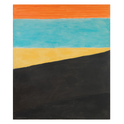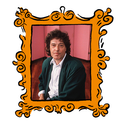The genres of contemporary art and cinema don't normally cross over. You don't get cubist or abstract expressionist movies any more than you get thriller sculptures or romantic comedy painting. There is, however, one genre that both forms truly share: horror.
Paul McCarthy—whose show at the Whitechapel, running until early January, is his largest ever British exhibition—is one of a group of American artists, including Tony Oursler and Mike Kelley, who came to prominence in the 1970s and 1980s and who produce a contemporary art equivalent of horror movies. Kelley made a name sewing up teddy bears into disturbing heaps. Oursler projects scary talking faces on to dolls and plaster orbs, with the effect of filling a gallery with mutant zombies. McCarthy's vocabulary of horror is slightly different. His is a world of pirates, penises, poo, chocolate, pornography and dismembered limbs. The Whitechapel show includes his signature busts of pirates with noses that look like scrotum sacs or penises, made out of something that looks like chocolate, but could also be poo. On the walls are large, deftly scribbled cartoon-like drawings with pirates, penises, words (usually "penis"), and pasted-on cut-outs from porn mags. McCarthy's videos run in the auditorium. I popped my head round the door. A handful of respectful art lovers were watching a video of the artist rubbing his flabby torso against a piece of glass, making patterns with his chest hair. The camera eventually panned up, to reveal the artist preparing a huge gob of spit. I left at this point, and therefore cannot give you a description of the other films he was showing, such as Shit Face Painting and Penis Dip Painting (both 1974).
You can't miss the Freudian and Marquis-de-Sade-style message—it's a world of unrestrained perversity which lays bare the libido and violence concealed in consumerism. The pirate, so popular in children's toys, is a symbol of dark hedonistic dreams enacted in play. It's somewhat disconcerting to look at art whose meanings are so easy to decipher. Most contemporary art is guilty of being impossibly incomprehensible, but McCarthy and his contemporaries have gone to the other extreme of being irritatingly obvious. But is it reasonable to criticise art for being so straightforward? True, McCarthy's vocabulary of symbols is rather limited, yet his broadbrush sexualised melodrama has had a huge influence on a younger generation of artists who emerged in the 1990s—such as the Chapman brothers, whose dolls with penises for noses have an unmistakeable forerunner. Or, the German artist Gregor Schneider, who famously transformed his father's house into a terrifying trap of lead-lined rooms and fake partitions. Thinking across the centuries of art history, it's no problem comparing McCarthy's dystopian caricatures to Breughel's scatological Dutch scenes and Bosch's depictions of hell. In terms of 1970s conceptual art, McCarthy steered body art in a new direction—away from Bruce Nauman's cerebral analysis of the primary qualities of the body and towards a new visceral exploration of flesh and fluid, which assaults the sanitised faces and bodies that fill fashion mags and cinema screens. Then there's McCarthy's diversity and coherence to consider. He makes sculptures, drawings, paintings, photographs and uses readymades; he also shoots videos of the ritualistic performances he enacts with his friends. Part of his achievement is to present a unified aesthetic vision across so many different media, all the while maintaining an amateur and infantile appearance.
None of this saves McCarthy's art from its predictability. For that, you have to be bowled over by its cinematic impact. It's fine to be as obvious as a movie as long as you also have as much adrenalin. Sometimes McCarthy manages this, and the Whitechapel is offering a staggering McCarthy installation in a deserted warehouse a ten-minute walk from the gallery. Here the artist has installed a perverted Disneyland attraction. There's a pirate galleon apparently made out of red wax and next to it another kind of motorised ship which twists and turns on its pivots as if it were in a gale. In dirty side-rooms videos show adults singing "Santa Claus is coming to town." Suspiciously stained chairs sit next to DVD players. Against one wall there is a series of projected videos, all at skewed angles, in which McCarthy and his friends smear their half-naked bodies with a chocolate-like substance. Walking round this enormous and genuinely creepy installation, I felt I was myself in the last scene of a horror movie. I was a cop tracking a freaky serial killer who had been leaving strange drawings attached to the mutilated corpses of his victims. Now I'd finally uncovered his lair. He was living in squalor surrounded by sex and defecation videos, a place where he was building oversized, perverted fairground rides. He was a bitter, disappointed artist, whose work had once been acclaimed for its social critique, but who had fallen from favour. In revenge he'd devised a series of gruesome deaths for pretty gallery assistants. While this is probably a reading the artist would resist, it's enough for me, and it gives me a great idea for a feature film script.
Private view
Paul McCarthy's horror art has influenced a younger generation, through its embrace of perversity, its use of different media, and its obviousness
January 22, 2006











